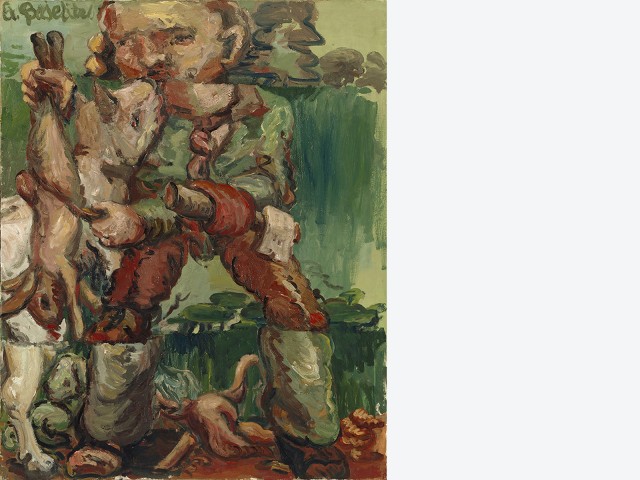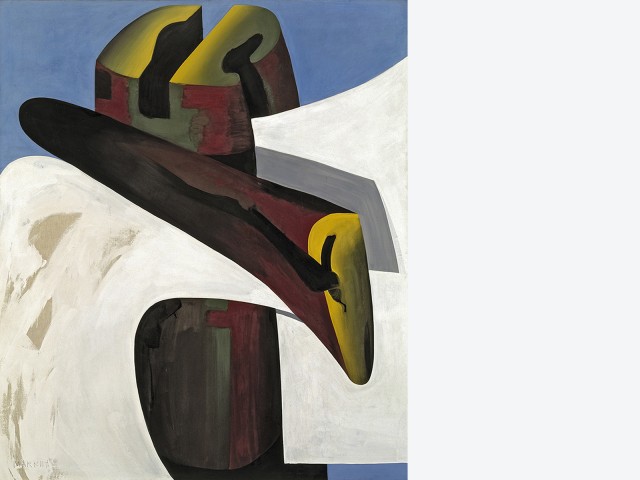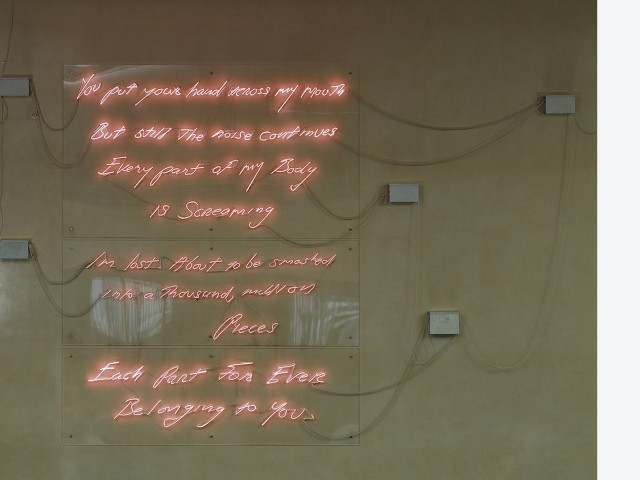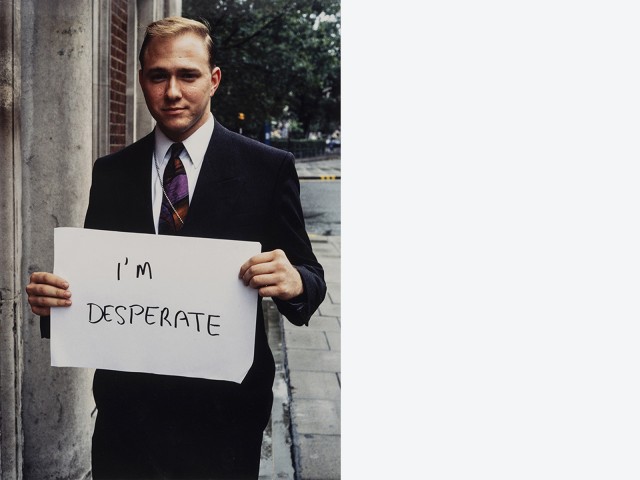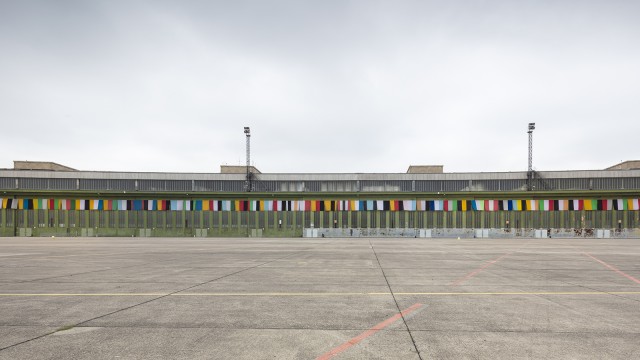
Promote, Preserve, Communicate
The Collection's Profile
50 years of collecting history that mirror almost 100 years of art history. The LBBW Collection in its current state combines the art collections of its predecessor institutions, and therefore reflects a variety of specific interests, regional emphases, and the change in conceptual approaches when new purchases are made. In addition, the LBBW Collection has evolved with intermittent intensity and not always in a straight line since officially coming into existence in 1999. Consequently, as well as shedding light on around 100 years of predominantly German art history, the LBBW Collection is part of the history of the companies associated with it.
Foundation and Evolution
Art in Southwest Germany
The collection's history starts with the Städtische Spar- und Girokasse Stuttgart. The Board of Managing Directors’ decision in 1970 to set up a gallery to present art on its premises was followed a year later by a commitment to the continuous acquisition of art. In retrospect, Dr. Walther Zügel, a member of the Board of Managing Directors of the Städtische Spar- und Girokasse Stuttgart and its Chairman from 1972, was a key figure in starting up the collection. His involvement continued after the merger between Städtische Spar- und Girokasse and Württembergische Landessparkasse into Landesgirokasse (LG) in 1975. Up until his retirement in 1996, he had a defining role in the collection and promotion of art for the now established “Landesgirokasse Collection” as Chairman of the Board of Managing Directors. This also included the “Wettbewerb der Landesgirokasse zur Förderung der künstlerischen Photographie in Deutschland (Landesgirokasse Competition to Promote Artistic Photography in Germany)”, which ran from 1989 to 1995.
Abstract Tendencies
The Stuttgart Academy and the circle of Hölzel
In terms of art history, the Stuttgart-based “Hölzel circle”, which emerged from Adolf Hölzel’s class at the State Academy of Fine Arts Stuttgart from 1905 onwards, marks the starting point of the Landesgirokasse Collection, and is also a milestone for the current LBBW Collection. It includes works by Adolf Hölzel himself as well as those of his former students, such as Oskar Schlemmer, Willi Baumeister , Ida Kerkovius, Max Ackermann, and Adolf Fleischmann, which were also incorporated in the collection.
Figurative Tendencies
The Karlsruhe Academy
The State Academy of Fine Arts Karlsruhe is another influential center of art training in southwest Germany. Erich Heckel, co-founder of the artist group “Die Brücke”, entered the Landesgirokasse Collection already in the early days. Having refused an invitation to move to Berlin, Heckel taught in Karlsruhe from 1949 to 1955. His immediate successor was HAP Grieshaber. Grieshaber ushered in an original reinterpretation of the expressionist movement established in Germany before the Second World War, which ultimately led to “Neue Figuration (New Figuration)”. This new approach to figurative painting is embodied in various ways by the work of his former students Horst Antes, Dieter Krieg, and Walter Stöhrer, as evidenced by the selected works from the LBBW Collection.
Complementary Perspectives
German and International Art
Based on the general artistic climates of the Stuttgart and Karlsruhe academies, the Landesgirokasse Collection therefore includes works from both the abstract and figurative schools. Otto Dix is also represented in the collection, broadening its artistic scope beyond the centers of southwest Germany. Prof. Peter Beye, Director of the Staatsgalerie Stuttgart from 1969 to 1994 and an internationally renowned figure in the museum world, came on board in 1993 as a collection consultant. In conjunction with Lutz Casper, then the adviser and now the current Head of the LBBW Collection, Peter Beye forged a conceptual link between the existing works and new purchases and established them as a coherent body. Major works by Georg Baselitz, Julius Bissier, Peter Brüning, Ernst Wilhelm Nay, Markus Lüpertz, Anselm Kiefer, and Gerhard Richter were added to the collection as a result. In parallel and from the early 1990s, groups of works by prestigious younger artists such as Asta Gröting, Andreas Gursky, Candida Höfer, Martin Kippenberger , Astrid Klein, Thomas Locher, Thomas Ruff, and Rosemarie Trockel were also purchased for the Landesgirokasse Collection.
The collection activity of SüdwestLB, started in 1993, also stems from a Board resolution: as part of the new headquarter construction of “Am Hauptbahnhof 2”, a collection of explicitly contemporary international art was to be built up by 1998 in line with the concept devised by Prof. Stephan Schmidt-Wulffen as external consultant. As a result, artworks integrated into the bank’s work environment on a site-specific basis enhance LBBW's present-day headquarters. Consequently, works specific to architectural and functional contexts by Siah Armajani, Jorge Pardo, Thomas Locher , Liam Gilick, and Vito Acconci feature in the LBBW collection as well as works by Thomas Schütte and Franz West, alongside pieces by German and international artists including Isa Genzken and Rosemarie Trockel, Cindy Sherman, Elizabeth Peyton, Tracey Emin, and Gillian Wearing.
Mergers and New Emphases
At the Dawn of the 21st Century
The merger of Landesgirokasse, SüdwestLB, and parts of L-Bank in 1999 to form Landesbank Baden-Württemberg brought the hitherto separate collections of Landesgirokasse and SüdwestLB under one roof, resulting in an overview of the art scenes and art history since the beginning of the 20th century. At the time, both collections provided then the opportunity to build whole clusters of works by single artists, which have become typical for the character of the LBBW Collection. The newly consolidated LBBW Collection was then presented to the public in the same year in the exhibition “Zoom – Ansichten zur deutschen Gegenwartskunst (Views of German Contemporary Art)”. The task to further develop the collection, by expanding existing groups of works and adding more recent and younger artsitic statements, was handed to Lutz Casper, who was then appointed Head of the LBBW Collection. Important acquisitions from those years have been works by Günther Förg, Georg Herold, Albert Oehlen as well as Franz Ackermann, André Butzer, Michel Majerus, Josephine Meckseper, Tobias Rehberger, Wolfgang Tillmans, and Corinne Wasmuht.
Shortly afterwards and in quick succession several financial institutions were taken over by LBBW. In 2005 BW-Bank AG was completely merged into LBBW. The art collection of BW-Bank AG, established in 1993 at the initiative of Dr. Frank Heintzeler, then a member of the Board of Managing Directors, adds a further stock of arthistorically valuable works. Until 2005 BW-Bank pursued a collection strategy focused on southwest Germany. Earlier acquisitions were paintings such as “Die Einsamkeit” (1906) by Hans Thoma or Otto Reiniger’s „Elbe (Elbmündung bei Cuxhaven)“. Regularly held exhibitions at the bank’s headquarters on Kleiner Schlossplatz supplemented BW-Bank’s commitment to art together with occasional purchases of works by renowned German artists such as A. R. Penck or Markus Lüpertz.
In 2008 further items were added to the LBBW Collection following the integration of Landesbank Rheinland-Pfalz and Landesbank Sachsen into LBBW. Under the former director of Landesmuseum Mainz, Dr. Berthold Roland, the collection of Landesbank Rheinland-Pfalz was mainly geared towards graphic arts, in a nod to Johannes Gutenberg, the inventor of the printing press, who was born in Mainz. In addition, major works by artists from Rhineland-Palatinate and the Rhineland, such as Max Slevogt, Hans Purrmann, Otto Dill, and Ernst Wilhelm Nay were purchased. Following the acquisition of Landesbank Sachsen, graduates of the Leipzig and Dresden academies saw their works added to the LBBW Collection. Their association with Landesbank Sachsen also stems from project grants and an art prize. They include prominent figures such as Neo Rauch, Tim Eitel, and Matthias Weischer.
With the first outliers of the financial crisis already underway, in 2009 two major exhibitions presented the current devlopment of the LBBW Collection: the first, entitled „Extended – Sammlung LBBW“, at ZKM I MNK Karlsruhe, and the second, entitled „Vor heimischer Kulisse“, in Leipzig at Galerie für zeitgenössische Kunst, that showed parts of the collection of Landesbank Sachsen, already supplemented with works from the LBBW Collection.
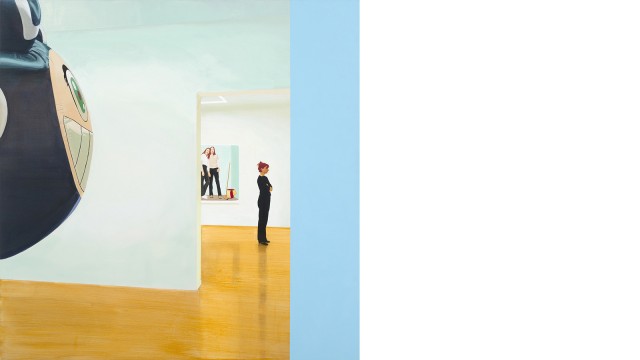
Tradition and Outlook
Collecting Contemporary
In 2018, after the successful restructuring of LBBW due to the international financial crisis of 2008, LBBW celebrated its 200th anniversary. What is more, the bank paved the way for resuming its collection activities. The initiative for this came from Rainer Neske, the new Chairman of the Board of Directors of LBBW, in 2017 and was aimed at reviving the bank's commitment to art while giving a new, contemporary impetus to the LBBW Collection. The related art concept centers on issues that are widely portrayed in contemporary art. Along with the transformation of the business world as a result of globalization and an increasingly digitally connected world, issues relating to nature, the environment, sustainability, migration, equality, and identity are also covered.
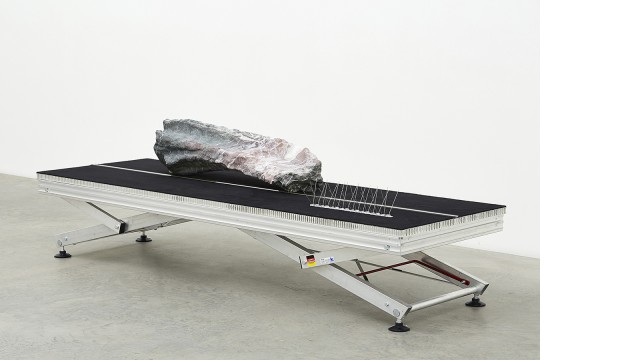
Art Board
The further development of the LBBW Collection is overseen by an honorary Board of Trustees, which was reconstituted in 2018. The Board of Trustees currently comprises the following members: LBBW board member Stefanie Münz chairs the committee. Further members include Prof. Dr. Dirk Boll (Director of 20th and 21st Century Art, Christie's), Ann-Kristin Stetefeld (Member of the Board of Management of BW Bank), Dr. Ulrike Groos (Director of Kunstmuseum Stuttgart), Johan Holten (Director of Kunsthalle Mannheim), Thomas Locher (artist and former Rector of HGB Leipzig) and Dr. Ulrike Lorenz (President of Klassik Stiftung Weimar). The expert board is formed by Dr. Nadia Ismail (Director Kunsthalle Gießen), Dr. Gregor Jansen (former Director Kunsthalle Düsseldorf) and Sarah Haberkorn (Curator LBBW Collection).
Art in the Workplace and Art Education
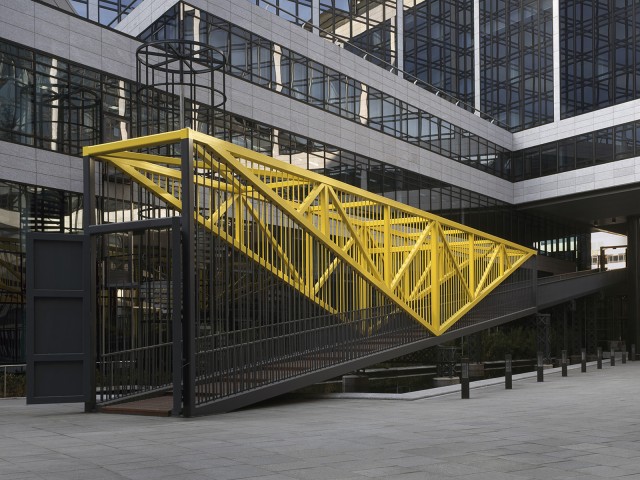
Interface to the Public
Many works in the LBBW Collection are on display at the bank’s headquarters in Stuttgart as well as branches in Germany and abroad. In addition, a concise, specially commissioned, site-specific work by the Iranian-born artist Siah Armajani has been in place at LBBW’s “Am Hauptbahnhof” head office in Stuttgart since 1994: Armajani’s “Bridge/Ramp” is an architectural hybrid of a bridge and a ramp that directly connects the inner courtyard of LBBW's headquarters with the main entrance level.
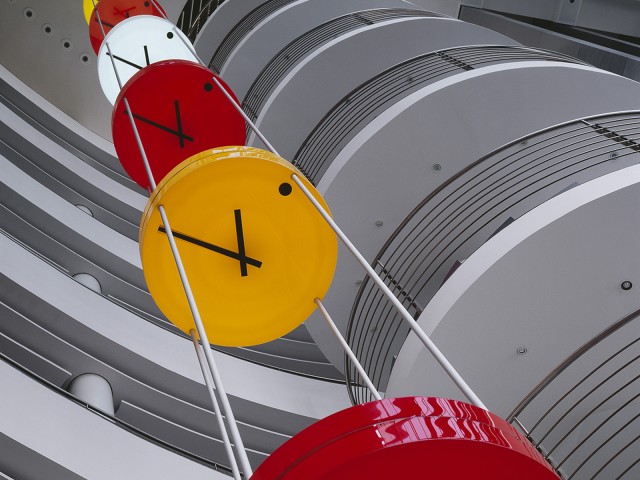
Sculptural Statements
The large, light-filled foyer of LBBW’s Stuttgart headquarters also boasts another permanently installed work. Jorge Pardo’s “Clock, clock, clock, clock (you have to say it fast)” from 1997, a monumental vertical timepiece, is placed prominently in the entrance area. The positioning of the six illuminated, round and colored dials, suspended from the ceiling, is aligned with the story levels of the building.
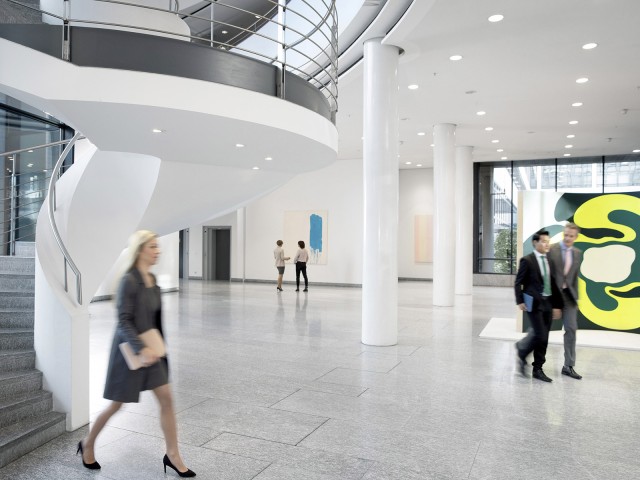
Bringing Art to Employees
Many of the artworks from the core collection are put on temporary display in the foyer and on the various floors of the bank’s headquarters in Stuttgart. In addition to this core collection, the Group also holds around 13,000 works in the diverse fields of graphic arts, photography, drawing, and painting. They largely originate from parts of former collections held by LBBW’s predecessor institutions and were purchased in order to promote young artists at a regional level. These works are available for employees to lend and furnish their workplaces, and for display in common rooms and areas of the bank with high customer traffic.
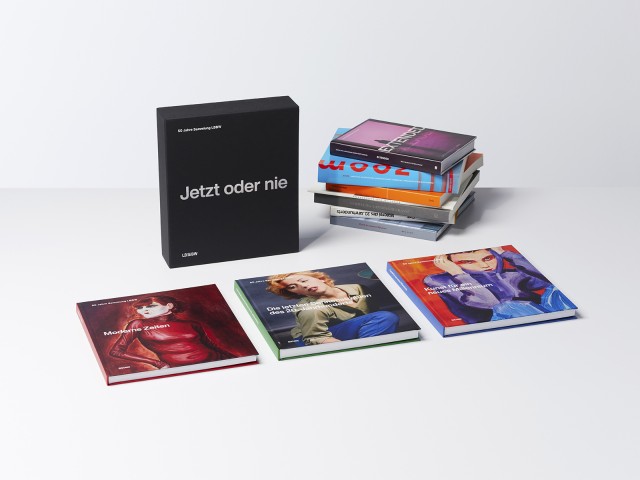
Collection Publications
Catalogs are used to constantly document the works in the current LBBW Collection and make them widely accessible to interested members of the public. For instance, Landesgirokasse Stuttgart, SüdwestLB, BW-Bank AG, and Landesbank Rheinland-Pfalz have each issued publications about their collections. The first collection catalog, “Zoom”, was issued in 1999, and related to the LBBW Collection that was newly formed that year. “Extended”, the exhibition of the LBBW Collection at the ZKM Karlsruhe in 2009 with a catalog of the same name, enabled new access and further insight into the bank’s collection activities. “Jetzt oder nie (Now or Never)”, the most comprehensive publication on the LBBW Collection to date, has been issued to mark the collection's 50th anniversary.

Special Publications
The portrait ‘Kommerzienrat Philipp Freudenberg’ by Max Slevogt from 1904, once in the collection of the Berlin-based Jewish entrepreneur and merchant family Freudenberg, was included in the collection of Landesbank Rheinland-Pfalz (LRP) in 1992, and then transferred to the LBBW collection when the LRP was incorporated. In the following the former head of the LBBW Collection, Lutz Casper, has initiated intensive research into the work. This publication, edited by Lutz Casper and the LBBW, reflects the current state of provenance research on the painting.

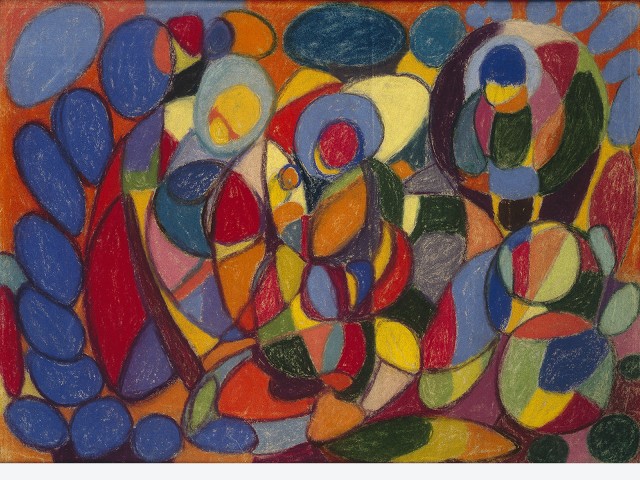
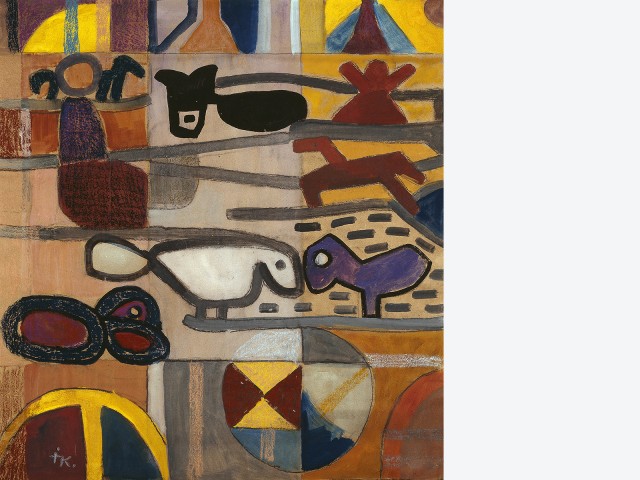
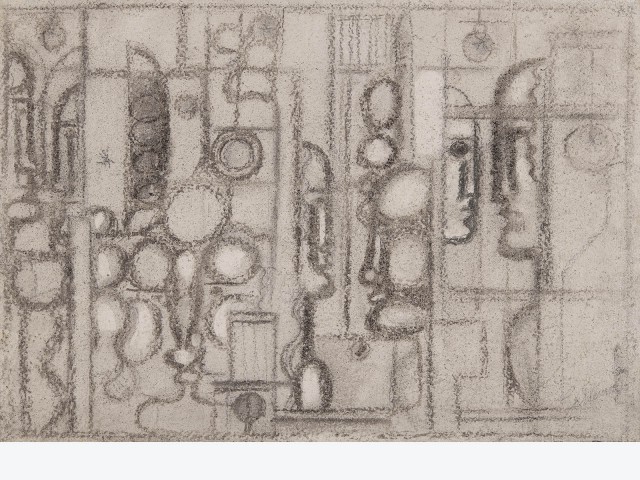
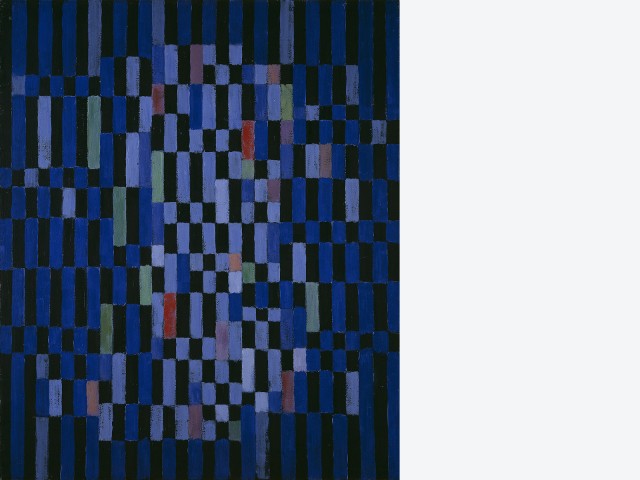
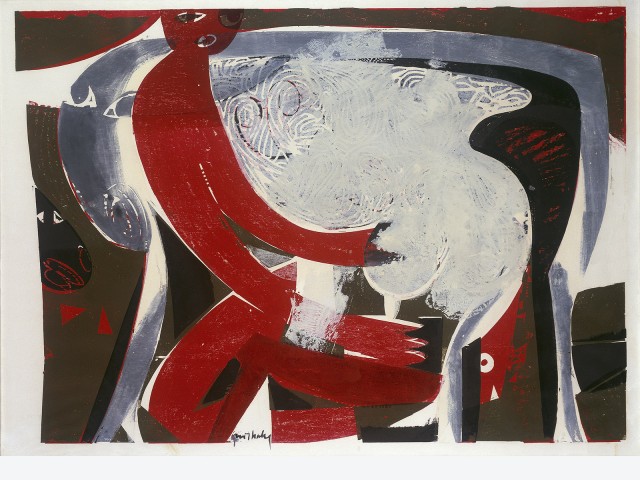
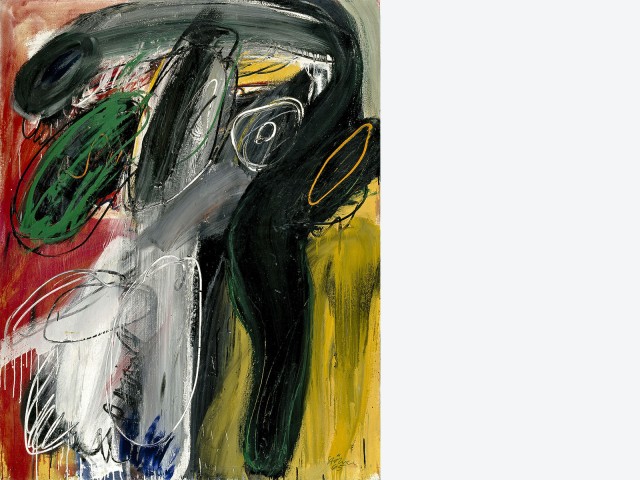
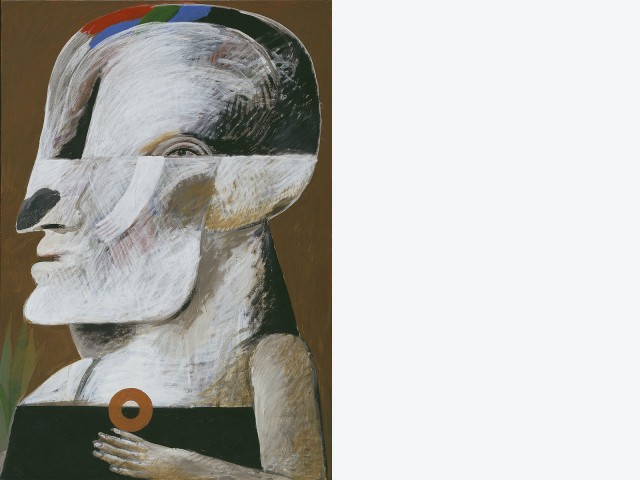
_1978_grolb_1600x1200_vn_image_w640_m.jpg)
